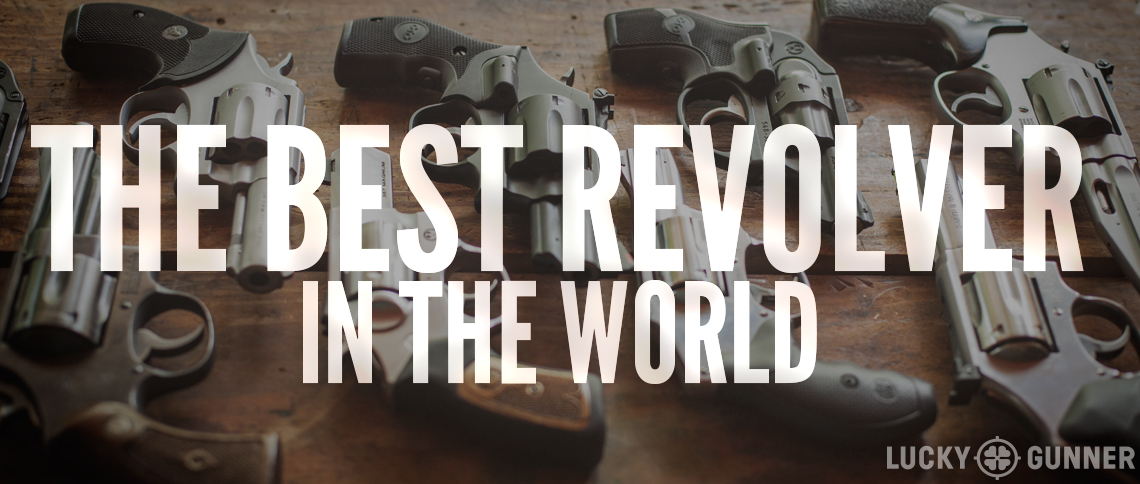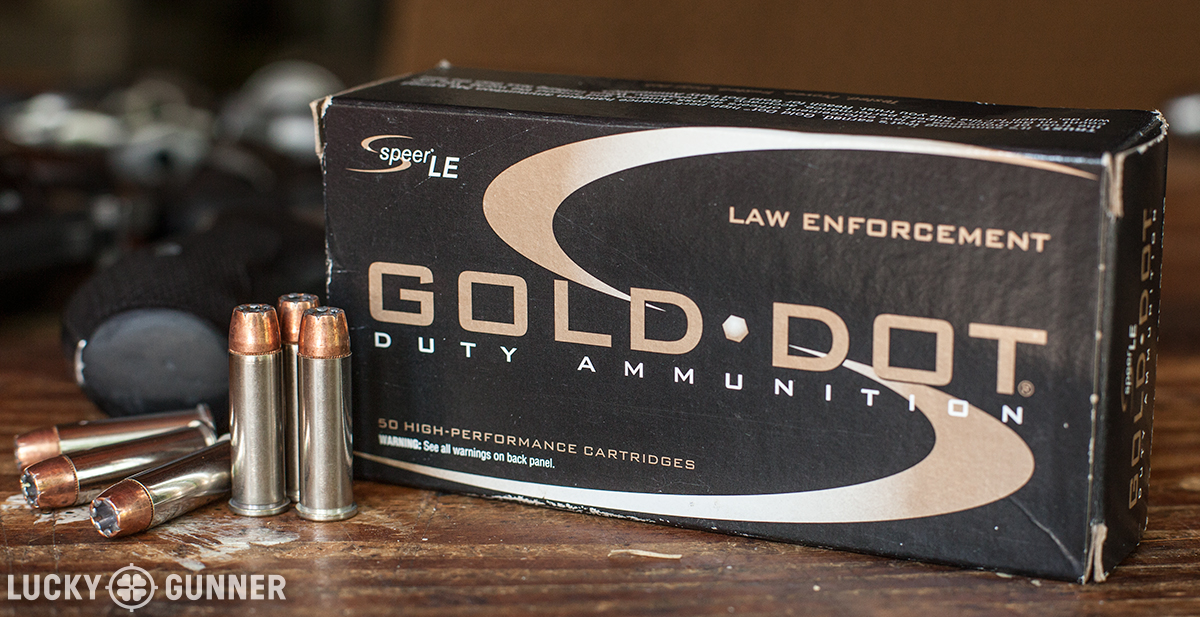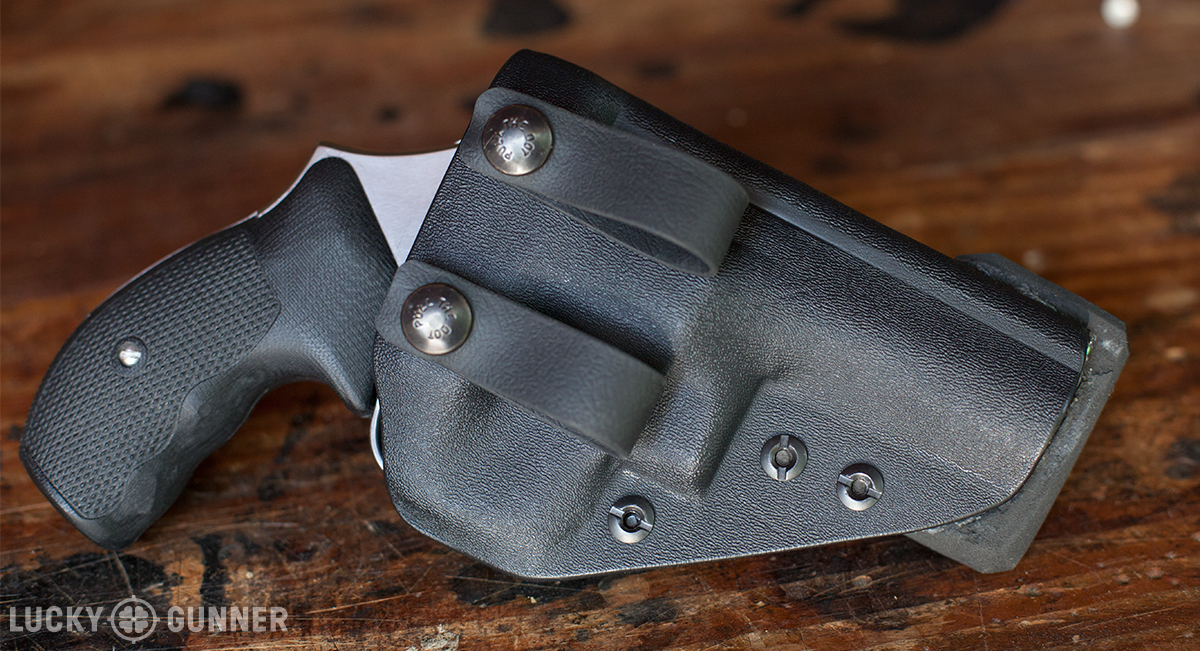When I launched the Wheel Gun Wednesday series back in January, my intention was to compare revolvers to today’s semi-autos in a more nuanced way than the typical Internet virtual shouting match allows. Instead of looking at the overly broad question of whether a revolver is the best self-defense option for any person in any situation under any circumstances, I decided to focus more narrowly on my own personal perspective: if I switched from practicing with and carrying a modern polymer 9mm semi-auto to a wheel gun, what would I discover? And which specific revolver would be best suited for this task? That’s what I worked on for the first half of 2015.
The results are summed up in the video below, or you can keep on scrolling to read the full transcript. Below the transcript, you’ll find some additional details that didn’t make it into the video!
This is my Smith & Wesson Model 66 and it’s the best revolver in the world.
Okay, that might be an exaggeration, but only slightly. I have some good reasons for believing this Model 66 is about as good as a fighting revolver can be, but first — a little background.
Why Revolvers?
I’ve always been a fan of revolvers. I like shooting them, studying them, and I’ve even carried a small 5-shot .38 on occasion. It’s kind of like driving a manual transmission — revolvers let you feel like you’re more directly involved in the shooting experience. But for self-defense I’ve always considered revolvers to be less than ideal compared to other options.
I don’t want that to be true. I still really like revolvers — I want to shoot them and buy them and carry them. But at the end of the day, I’m far too practical to pursue the enjoyment of revolvers as an end in itself. If a semi-auto is just as practical to carry, but it’s more likely to help save my life, I’m not going to switch to a revolver just for fun.
But I had to give revolvers a fair chance. I couldn’t let go of this idea of that a revolver could potentially be the equal of a semi-auto if i just had the right revolver and got good enough at shooting it. I might even find some benefits of using a revolver that I didn’t really understand before. So at the beginning of this year, I decided that would be my project.
Normally, the gun I rely on almost every day for self-defense is a Smith & Wesson M&P compact: a double stack 9mm semi-auto. So wherever I go, I have 13 rounds on tap before I need to reload. I can shoot this gun pretty well — it’s fast, reasonably accurate, easy to conceal, and I’m confident in using it.
My first step in this project was to find a revolver that I could learn to shoot just as well and carry just as easily. And then I wanted to work on my reloads to mitigate the problem of low ammo capacity.
Finding the Ideal Carry Revolver
So for the first half of the year, I shot revolvers almost exclusively. Every week, I was at the range with a few boxes of .38 special and a couple of wheel guns trying to find one that would give me that balance of shootability and concealability.
After a lot of trial and error, the revolver I landed on is the Smith & Wesson Model 66. It’s a 6-shot .357 magnum made in 2004 and based on the Smith & Wesson medium size K-frame, a design that goes back to 1899.
The K-frames are a good middle-of-the-road size. They’re not awkward to use like the small J-frames and they carry a lot easier than the bigger L- and N-frame Smith & Wessons.
I picked the 66 in particular out of all the other K-frame models mostly because of the adjustable sights and the option to get a 3-inch barrel. It’s a nice balance between the short snub nose barrels and the full-size 4-inch barrels that are more common.
The gun weighs just over 2 and a half pounds loaded with a holster. That’s about 20% heavier than my M&P. It’s also a little longer, and the grip sticks out farther, but I can still conceal it with some effort.
Smith & Wesson Model 66 Mods and Accessories
One of the advantages of shooting a gun with a basic design that’s 116 years old is the availability of modifications and aftermarket parts. So the first thing I did to this Model 66 was improve the action.
I installed a few different springs until I found a combination that lightened up the double action trigger a little bit, but would still reliably ignite the primers on my carry ammo.
And thanks to this excellent vintage 20th century instructional DVD from Jerry Miculek, I also smoothed out some the rough spots in the action.
The final result is a buttery smooth double action trigger that breaks at about 8.5 pounds.
I changed out the factory adjustable sights for a for the more durable Rough Country rear sight from Bowen Classic Arms. The original front sight was fiber optic, which I like, but it had a rounded profile that makes it tough to get good sight alignment on longer shots, so I got rid of that in favor of a square fiber optic from Cylinder and Slide.
For a self defense revolver, you’ve got to get rid of that hammer spur and convert it to double action only. Using the single action feature on self-defense revolvers is, frankly, un-American. And the hammer spur will get caught on clothing during the draw stroke anyway. So I installed the spurless Evolution hammer from Apex Tactical. I also got an XP firing pin from Apex, which helps with more reliable primer ignition.
The grips on a revolver are where you have the most options. They come in all kinds of shapes and sizes. I settled on the Tactical Diamonds from VZ grips, but I sanded off the finger grooves. They fit really well now, and have aggressive texture just where I want it to be.
You might have noticed this plug in the internal lock opening here just above the cylinder release latch. They don’t make the 3-inch Model 66 anymore and the used ones are getting tough to find, so I was able to save a few bucks by getting one that was made after Smith & Wesson starting putting these locks on all their revolvers. For liability reasons, our lawyer says I’m not supposed to talk about how to disable the lock, but he’s not here right now, so all you have to do is take off the sideplate [CONTENT REDACTED] and then it works just like any pre-lock revolver.
S&W Model 66 Range Performance
So now that I’ve got six months of dedicated practice and a revolver that’s set up the way I want it, how does it perform?
I can’t run the trigger quite as fast as my M&P, but in self-defense drills I actually shoot it a little more accurately than most of my semi-autos.
The long double action trigger forces me to slow down just enough to confirm proper sight alignment. I end up getting hits when I otherwise might rush the shot and miss with a semi-auto. The trigger control discipline necessary to shoot a revolver well carries over when I switch back to semi-autos, so as long as I keep my revolver skills sharp, my pistol shooting benefits too.
I got really comfortable with emergency reloads on this revolver using Safariland Comp II speed loaders. I couldn’t find a speed loader pouch that I liked, so I just keep the reload in my front pocket.
With this setup, I can reload in about 4 and a half seconds if everything goes smoothly. One of the only benefits of having such a low ammo capacity is that you get lots of opportunities to practice reloads at the range. It doesn’t take long to get in plenty of repetitions, even if you don’t set aside much time to specifically work on reloads.
A three-inch K-frame is pretty bulky compared to a five shot snub nose, but a medium size revolver offers some pretty compelling benefits. That full size grip that’s such a pain to keep concealed is really nice to have when you go to draw the gun. And the extra bulk really helps out when you’re trying to keep the sights still on targets out past 10 yards. And with .38 Special ammo, the recoil is really mild.
For the first time, I really feel confident that I could bet my life on a wheel gun if I needed it in a real emergency, especially if that revolver was my model 66. There might be better revolvers out there, but for all practical purposes, for me, this Model 66 is the best revolver in the world.
But… it’s still a revolver. The K-frame is easy to carry relative to other revolvers, but not even close to the convenience of a polymer compact semi-auto.
And the capacity issue is really the big elephant in the room. The more I learn about real world defensive shootings, the more aware I become of the possibility that six shots might not be enough, and trying to pull off one of those finicky reloads doesn’t sound like a good solution to that.
The revolver does have some benefits, and it’s certainly not obsolete. For someone who knows how to use one, it will get the job done most of the time.
But much as I hate to admit it, I can’t really deny that for me, even the best revolver in the world can’t compete with the practical advantages of a modern boring plastic double stack 9mm.
Deleted Scenes
Here are a few more thoughts about my project revolver that didn’t make it into the final cut of the video.
Carry Ammo
As I’ve mentioned a few times previously in the Wheel Gun Wednesday series, my chosen carry ammo for .38/.357 revolvers is the Speer Gold Dot .38 spl +P 135 gr load. Out of an all-steel K-frame, the perceived recoil of this load is only marginally greater than the rather tame practice ammo I’ve been using, which is American Eagle 130 gr FMJ.
The 66 can handle .357 magnum loads, but it’s not wise to subject it to a steady diet of the high pressure ammo, nor is it particularly pleasant for the shooter. Even if there were no mechanical or comfort issues, the muzzle flip, concussion, noise, and muzzle flash that come with firing magnum ammo out of a 3-inch barrel make it difficult to get quick, accurate hits on target. On the other hand, the light recoil of the .38 +P Gold Dot load means I can crank off six rounds as quickly as I can manipulate the trigger.
Today’s .357 magnum ammo hasn’t benefited from advances in modern bullet technology nearly as much as .38 special has, and the gap in real world effectiveness between modern iterations of the two sister cartridges is minor compared to what it was when cops carried six shooters — at least as far as typical carry guns are concerned. Carbines and long-barreled revolvers are able to wring out more of the potential velocity of the .357 magnum cartridge to pull off some pretty impressive feats for a pistol caliber. But from my little 3-inch S&W, that power is never fully realized, and magnum loads offer more bark than bite.
The Holster
For the last five or six years, I’ve always carried my handguns in the appendix inside the waistband (AIWB) position. It’s definitely not for everybody, but for me, carrying this way is quicker, safer, and more comfortable than any other carry position I’ve tried. Unfortunately, even though holster options for K-frame revolvers in general are legion, AIWB style holsters are a rare breed. But I did eventually find one to fit the S&W Model 66 — the kydex Archangel from Dale Fricke Holsters.
In general, I’m pretty happy with this holster, but I had to make a couple of modifications. The holster I ordered was made to fit “3-inch K-frames” generically, but not the 66 in particular. There wasn’t quite enough room for the adjustable sights or the ejector rod shroud — features that are not present on all K-frames. A few minutes with a file to relieve the opening of the holster allowed the rear sights to fit, and replacing the screws with slightly longer ones I had on hand let me adjust the overall fit of the holster to accommodate the shroud.
The final change I made was to the “extra girth adapter kit.” This optional feature is essentially a small block of dense foam rubber that’s attached to the muzzle end of the holster with some adhesive. The idea is to prevent discomfort from the open bottom of the holster digging into the body, and also to help keep the rig from sliding around while its being worn. I found that the “extra girth” kit had a little too much girth, so with liberal use of a Dremel sanding wheel, I re-shaped the square block into a wedge and reattached it with some waterproof glue made for shoe repair. The final result isn’t exactly pretty, but comfort is much improved.
Inside the waistband carry generally isn’t particularly easy with revolvers. The thickest part of the gun — the cylinder — tends to sit right under the belt, which isn’t conducive to either concealment or comfort. The Dale Fricke holster has worked fairly well, but even a great holster can’t magically make this particular challenge go away completely. I plan to continue experimenting with other holsters and will report back if I find one that makes appendix carry with a K-frame any easier.
The Future of Wheel Gun Wednesday
The dedicated period of “field research” for my revolver project is finished for now, but that doesn’t mean the end of Wheel Gun Wednesday forever. I still have plenty of observations to share, and other topics to explore in the world of the round gun, even if those updates come more sparingly than they did in the early part of this year. I’ve had some requests to follow up on the contenders that lost to the Model 66 for my carry revolver decision, so a detailed look at some of those is in the works. I’m also attending a couple of revolver classes later this year run by world-class trainers and actual expert revolver shooters, which will undoubtedly lead to some new revelations. So keep your eyes peeled for more Wheel Gun Wednesday goodness in the near future.




